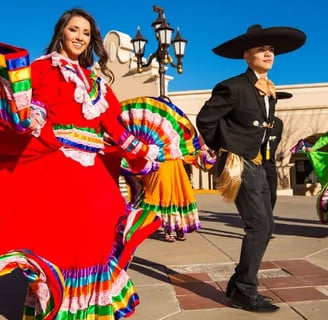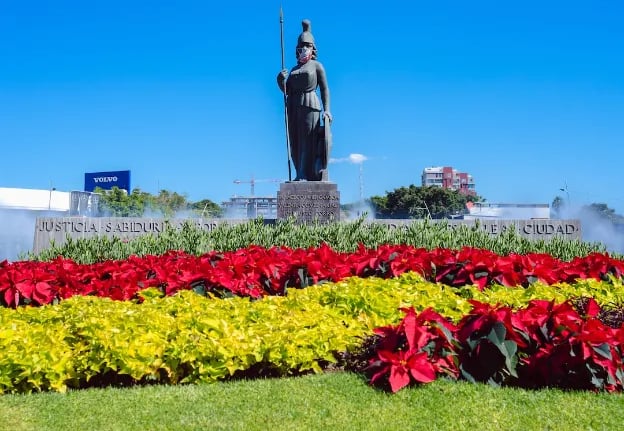The History of Jalisco Mexico – From Revolution to Today
1/15/20235 min read
The culturally rich state of Jalisco is the birthplace of numerous well-known Mexican symbols, such as sombreros, rodeos, the Mexican Hat Dance, and mariachi music. Tequila was also created in this region. The state has Mexico's second-largest urban population. It has expanded to include a number of smaller municipalities, such as the historic Tlaquepaque, affluent Zapopán, and the colonial towns of Tonalá and El Salto. Some of Mexico's top universities, including Universidad Autónoma de Guadalajara, Universidad de Guadalajara, and ITESM Guadalajara, are located in Guadalajara.
History
Early Period
According to the bones, tips from projectiles, and small tools they left behind, nomadic tribes traversed Jalisco between 10,000 and 12,000 years ago. They may have been traveling between the north and the south while pursuing large game like mastodons and woolly mammoths, according to some evidence. Later, simple towns started to appear along rivers and lakeshores. Similar artifacts have been found in Jalisco, as well as 3,500-year-old ceramic figures at the archaeological site of El Opeo in the neighboring state of Michoacan.
Did you know that Mariachi music, charreadas (Mexican rodeos), the Mexican Hat Dance, tequila, and the wide-brimmed sombrero originated in Jalisco?


Ixtépete, which features tombs and pyramid platforms, is the oldest pre-Hispanic city in Jalisco. Between the 7th and 10th centuries A.D., this city reached its pinnacle. Its decline has unknown causes.
Numerous nomadic tribes hunted game in the central valley of Jalisco from the tenth to the sixteenth centuries. The Coca lived close to Guadalajara, and the Cuyuteco Indians lived close to the modern towns of Cuyutlán and Mixtlán. The Tecuexes lived in the area northeast of Guadalajara to Lagos de Moreno. The Caxcane inhabited the state's northern region, while the Guamare lived along what is now Jalisco's eastern border with Guanajuato.
Middle Period
Soon after Hernán Cortés' conquest of the Aztec capital of Tenochtitlán (now known as Mexico City) in 1521, Spanish explorers started to make their way to Jalisco. The first was Cristóbal de Olid, who was hired by Cortés in 1522 to explore Mexico's northwest region in search of priceless minerals. Seven years later, Nuo Beltrán de Guzmán led a force of 300 Spaniards and 6,000 native warriors in a similar direction. Guzmán was notorious for his brutal treatment of Mexico's indigenous population, and his atrocities in Jalisco sparked such outrage that many Indians launched the Mixtón Rebellion in 1541 and besieged the recently established Spanish town of Guadalajara. Only with the help of thousands of additional forces provided by Viceroy Antonio de Mendoza was the rebellion put down.
Despite the bloodshed, Guzmán brought to Jalisco, he did leave a lasting legacy by instructing Juan de Oate, his chief lieutenant, to found La Villa de Guadalajara in 1531. The original site was in what is now the state of Zacatecas, north of Jalisco, but frequent attacks by the Caxcane forced the settlement to move several times. The city of Guadalajara was finally established on February 14, 1542, at its present location.
By bringing in goods from the Pacific coast and exporting them to the rest of Mexico during the 17th and 18th centuries, Guadalajara increased its wealth and power. Negotiating amicable agreements with the local tribes helped the area become more stable as well.


Miguel Hidalgo launched a movement for independence from Spain on September 16, 1810, which had a profound impact on Mexico's political future. The cause was quickly taken up by rebel forces in Jalisco, who on November 4 routed the loyalist militia at Zacoalco and cleared the way for Hidalgo's new army to seize Guadalajara a few weeks later. On January 17, 1811, Hidalgo’s troops retaliated immediately, and Royalist forces led by General Félix Mara Calleja del Rey marched toward Guadalajara and engaged them there. The artillery from Calleja del Rey happened to hit Hidalgo's ammunition supply, sparking a grass fire and sending the rebels into a panic despite the fact that they outnumbered the loyalists. Hidalgo was defeated in the conflict, captured after two months, and killed on July 30.
As the war for independence dragged on, Jalisco saw additional fighting, particularly in the area of Lake Chapala in 1812, but it was no longer in the forefront of things. A significant earthquake in 1817 added to the general chaos as well as the capture, execution, or amnesty of key leaders. However, the independence movement eventually succeeded, and Spain signed the Plan of Iguala in 1821. The Free State of Jalisco joined the other states on June 2, 1823, to create the Mexican Republic.
Recent Period
Throughout much of the 19th century, Jalisco experienced frequent unrest, much like the rest of the nation. The state faced 27 rebellions between 1825 and 1885, the majority of which came from native tribes. The conflict between Mexico's liberals and conservatives spread to Jalisco in the 1850s, leading to 18 different governments between 1855 and 1864. In the meantime, several battles took place in Jalisco as the French invaded the nation in 1862. Mexico City was under French rule from 1863 to 1867.
During the Mexican Revolution of 1910, the state of Jalisco once more turned into a battlefield. The local militias of Jalisco, which backed President Porfirio Díaz, initially defeated the revolutionaries. Díaz had left the country, though, and was living in France by 1911, at which point the revolutionaries started fighting among themselves. As president, Venustiano Carranza, who stood for the Constitutionalists, chose Manuel Diéguez to lead Jalisco. Francisco “Pancho” Villa, a rival of Carranza's, entered Jalisco in 1914 and started rallying the peasants to his cause. He arrived in Guadalajara in December and coerced the wealthiest residents of the city into giving him a loan, which he then immediately distributed to the underprivileged. Villa's popularity increased as a result of this deed, but he was quickly expelled from the city, and the Constitutionalists soon took back control.
As a result of allegations that the Roman Catholic Church had abused its power, the new constitution of 1917 placed limitations on the church's ability to engage in politics and business. The tension between the church and the state grew as a result of these restrictions, but it wasn't until President Plutarco Elías Calles started strictly enforcing the rules and introducing new ones in the 1920s that the situation really started to deteriorate. Church supporters started the Cristero War in 1926 against the Calles administration. The town of Los Altos and the “Three Fingers” border region in Jalisco were turned into battlegrounds during the conflict. Although the war was officially over in 1929, there were still sporadic violent outbursts into the 1930s. The state government changed hands ten times between 1926 and 1932, in part because of this conflict.
The Partido Nacional Revolucionario (Institutional Revolutionary Party), which brought about a period of stability for Mexico City and the rest of the country that lasted until 2000, put an end to the political unrest and power struggles that had been going on for more than ten years.
Current Jalisco
Jalisco currently has the third-richest economy in the Mexican Republic. The state, which tops the charts in manufacturing jewelry, computers, and agricultural products, is home to more than 30 of Mexico's largest corporations. The two main agricultural products are agave (used to make tequila) and peanuts. Guadalajara is the primary software producer in Mexico, and the state produces 60% of all the country's computers.


Annual May Cultural Festival events in Guadalajara include musical performances, plays, art exhibits, and games. The International Mariachi Encounter, which takes place every September, attracts mariachi groups and their supporters from all over the world.
One of the most popular tourist destinations in Mexico is Jalisco because of its diversity, stunning scenery, and rich cultural traditions. The state introduced charros, sombreros, the Mexican Hat Dance, Ballet Folklórico, tequila, mariachis, and other customs to the entire world.
